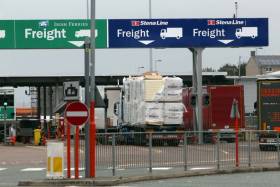Displaying items by tag: Holyhead, Anglesea
Lorries Will Queue Across Anglesea from Holyhead to Bangor If A 'No Deal' Brexit, Says Councillor
#FerryNews - Lorries forming long queus across Anglesea, north Wales could stretch from Holyhead Port to Bangor if there's a "no deal" Brexit, says a councillor amid uncertainty over the impact on the port.
As the Daily Post reports, London and Brussels hope to agree a deal by the end of the year to avoid tariffs and trade barriers, but Theresa May's Chequers proposals have been criticised by both Brexiteers, who want a full clean break, and the European Union , who say it would undermine the single market.
In the EU referendum in 2016, Anglesey narrowly voted to leave the union, despite the local MP and AM campaigning for a remain vote.
This was despite warnings that some of the 1,000 jobs at Holyhead could be at risk if Northern Irish ports continued to enjoy a 'soft' border with the Republic of Ireland while more stringent checks were introduced at ports on the British mainland.
With Holyhead handling around 320,000 trucks a year, drivers could face long delays and tailbacks on the roads unless an agreement is reached with the European Union.
For more on the story click here concerning the UK's second biggest ferryport after the Port of Dover.





























































